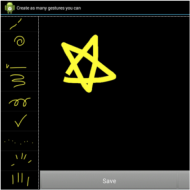
PERSONAL OBJECT RECOGNIZER FOR PEOPLE WITH VISUAL IMPAIRMENTS
The Motivation
Blind people often need to identify objects around them, from packages of food to items of clothing. Automatic object recognition continues to provide limited assistance in such tasks because models tend to be trained on images taken by sighted people with different background clutter, scale, viewpoints, occlusion, and image quality than in photos taken by blind users.
Related Publication(s)
Kacorri, H., Kitani, K. M., Bigham, J. P., & Asakawa, C. (2017, May). People with Visual Impairment Training Personal Object Recognizers: Feasibility and Challenges. CHI'17 (pp. 5839-5849). ACM. [PDF]











